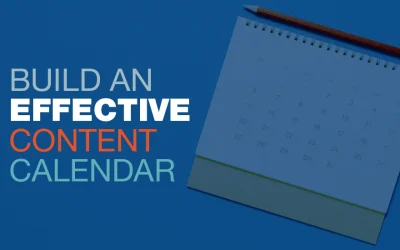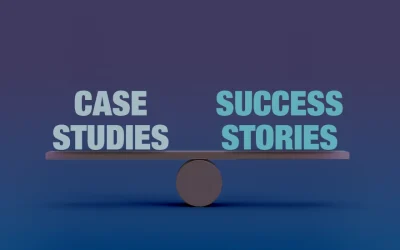If you have worked in marketing for any amount of time or even if you took marketing classes, then you likely encountered or worked on buyer personas already. They can sometimes be called an audience persona or marketing persona, but these all mean the same thing. Personas are profiles of what your ideal prospects are like. They are usually based on fictional people, but they use very real facts and information that are representative of your target audience.
Buyer personas help marketers create a life-like description of their target audience, which helps them gain a stronger understanding of who they should be attempting to attract through their messaging and campaigns. Think of a persona as a written guide that keeps you focused on the thoughts, feelings, attitudes, and demographics of your customers.
Usually, B2B tech companies can sell to a variety of customers in different industries and with different job titles. John Smith, CFO at ABC Company will have different buying objectives and pain points than his brother Joe Smith, who is the Warehouse Manager. Having a detailed buyer persona helps distinguish these differences so you can create custom messaging for each segment, engage each buyer—both logically and emotionally—and close a sale.
Let’s take a look at how you can create better buyer personas for your audience.
Step-by-Step Process for Identifying Buyer Personas
1. Conduct Market Research
Making an audience persona isn’t just a fun brainstorming activity. Since these personas will lay the foundation for your marketing efforts, you need to take them seriously. Doing your homework and conducting market research upfront is the best way to make sure your audience personas are accurate, especially if you don’t have a big pool of customers to extract data from.
If you’ve never done market research before, don’t let the term scare you. Market research is all about gathering insights into your consumers’ needs, interests, and pain points. You want to try and put yourself in their shoes to figure out what makes them tick.
This process can be simple or complex, depending on the size of your company, the number of products and services it sells, and how many industries you sell within. Your ability to conduct market research will depend somewhat on your resource limitations. However, it doesn’t require a major investment in an app or tool. You can do much of this work yourself along with your team.
You can get information about your customers by doing your surveys or conducting interviews, running a focus group (if applicable), observing the behaviors of your target customers online, or using third-party data and tools.
Here is a list of free tools you can use to research your target customers:
- The Census Bureau
- American Time Use Survey
- Bureau of Labor Statistics
- Social Explorer Profiles
- Claritas
- ONET
- Google Trends
- Statista
- Social media websites or Forums
If you want to conduct your surveys, these tools might come in handy.
- Google Forms
- SurveyMonkey
- Typeform
There are plenty of third-party research companies, but they can be a little more expensive. But if you’re interested in paying, here are a few reputable companies to investigate first:
2. Analyze Existing Customer Data
Analyzing data from existing customers is another important step in creating buyer personas. By analyzing customers’ data, you can discover insights and trends about your target customers. Collecting and analyzing data also enables you to segment customers by different needs, pain points, and industries so you can see which types of customers are best for you to continue targeting.
To analyze data, you first need to collect it. To do so, you can interview customers or use surveys to ask them questions that will help you discover important info about them. You can get data from any other internal tools and resources, like your CRM, project management tools, and other systems.
This part may take a bit of time, so don’t expect to do it in one sitting. Consolidate the data you have into one place so it is easy to find and come back to.
3. Identify Common Characteristics and Behaviors
Typical categories or segments you want to include in a buyer persona are:
- Demographic – age, race, ethnicity, gender, occupation, family status, education level, income, employment/employment history.
- Geographic – where customers are located (cities, rural, suburbs, regions, countries, etc.).
- Psychographic – interests, activities, values, opinions, belief systems.
- Behavioral – purchase patterns, how they found you, where they spend time online, what they do online, how they make decisions, buying motives, business objectives, etc.
Begin combing through the information you’ve collected. Look for things that stand out and are obvious. For instance, maybe 80% of your customers are wholesalers, or half of the customers you get along best with have a similar-sized company, or all your customers are located in a specific state or region. Put any insights into a list or table to easily reference it as you continue working.
Once the big obvious filtering is done, start getting more granular. Think about the psychological aspects behind your best customers. What are they like? Do they have similar interests, personality styles, hobbies, or working preferences? What about their behaviors? How did they find your company and why did they choose you over the competition? What made them say yes to doing business with you?
4. Create Buyer Personas
At this stage, the hard part is done. Using all your documented data and insights, you can begin writing out your buyer personas. You may have one or many. It depends on what you found in your data. Usually, two to three personas are a great starting point and can serve you well for years to come.
When writing out the personas, have a bit of fun with it. Get creative and make these personas come to life so new team members can read them and have a picture of exactly who the business is trying to reach.
Well-defined personas should sound like the profile of a real customer. Here is a brief outline you can use to create your personas:
- Fake Customer Name
- Job Title
- Company Industry
- Personal Demographics
- Background
- Goals
- Challenges
- Values
- Communication Style & Preferences
- Role in the Buying/Decision-Making Process
There isn’t a wrong layout or format when creating buyer personas. Just ensure to include the most important information and that the result sounds lifelike and can help you narrow your marketing focus.
5. Validate Buyer Personas
Once your personas are created, share them with your team. Ask for feedback across departments to see if there’s anything obvious you might’ve missed. Have open dialogue and discussions (or heated debates) with each other to make sure these are accurate.
A good rule of thumb is each persona should sound a lot like your best customer in each segment. “Best” is open to interpretation, but it should sound like the clients your company enjoys working with the most.
Reaching Your Target Audiences
If you follow the five steps well and collect accurate data, you are ready to start using your personas to reach new prospects. This should come easier than in the past since you’re armed with profiles of the types of customers you want to attract.
Now would be a good time to review (or create) your content calendar. Make sure the campaigns you have planned are in line with what your target customers would want. Focus on topics that will educate them and draw them in.
Think about the channels that should be used. For example, you may have discovered certain social media platforms are preferred among your target customers. Craft messaging for new campaigns on those platforms and, when appropriate, spend some time experimenting with ads on these specific platforms since you will likely get a bigger reach than just PPC ads on Google.
Marketing is NEVER One and Done
Like all things in marketing, buyer personas are not just a fun exercise. They should evolve and be revised as you learn more about your market. The same goes for the messaging and campaigns you create. Test, measure, analyze, and refine everything continuously to ensure you’re getting the right results.





0 Comments